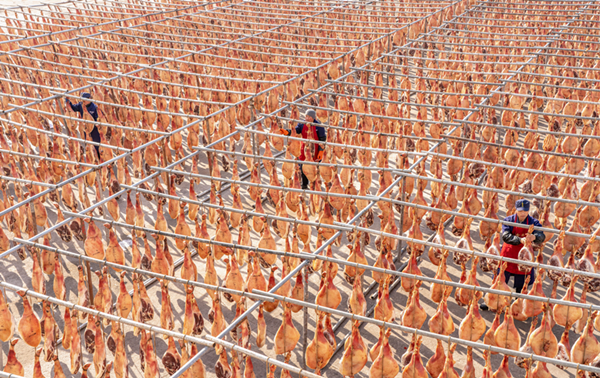
Thousands of legs of Jinhua ham are hung out to dry on the premises of Jinnian Ham Co in Jinhua's Jindong district, on Jan 10. [Photo/IC]
The prefecture-level city of Jinhua – located in East China's Zhejiang province – was recently approved as a national geographic indication product protection demonstration area by the China National Intellectual Property Administration, or CNIPA, thanks to the city's time-honored and famous quality ham.
A geographical indication, or GI, is a sign used on products – in an international system sanctioned by the World Trade Organization and other global bodies – that have a specific geographical origin and qualities or a reputation due to that origin, like champagne in France.
Meanwhile, a national GI product protection demonstration area in China is an area that mainly carries out the protection of its GI products. It has a designated scale and standardized management, with the products playing a significant and driving role in the development of nearby industries.
In 2021, China issued its first group of GI declarations, with only 50 approved nationwide and Jinhua becoming one of only two GI demonstration areas in Zhejiang province.
Jinhua ham, a famous local dish, is these days hung out to dry in food factories all over Jinhua and the city's history of ham curing can be traced back to the Tang Dynasty (618-907).
Traditional Jinhua ham uses the hind legs of a unique kind of pig native to Jinhua and the process involves around 80 stages – including curing, washing, drying and fermenting. The entire process usually takes around 100 days.
Jinhua ham is shaped, aromatic and tasty. It is on the list of Zhejiang's intangible cultural heritage items and is also designated a GI product by the CNIPA.